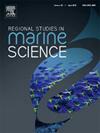Tire wear particles and leachable compounds: Occurrence and fate in the aquatic environment
IF 2.1
4区 环境科学与生态学
Q3 ECOLOGY
引用次数: 0
Abstract
Tire wear particles (TWPs) have emerged as significant contaminants in the aquatic environment, posing risks to local flora and fauna. Tire waste management methods like reuse and pyrolysis offer benefits but raise environmental concerns, including leachate and toxic emissions. TWPs accumulate in landfills and enter aquatic systems through atmospheric fallout and runoff. TWPs substantially contribute to the presence of synthetic polymers in the ocean, with emissions making up a notable proportion. The primary concern of TWPs lies in the leaching of chemical additives and their transformation products. A prominent example is the highly toxic quinone transformation product of N-(1,3-dimethylbutyl)-N'-phenyl-p-phenylenediamine (6PPD), a globally prevalent tire antioxidant. 6PPD-quinone was identified using Effect-Directed Analysis (EDA), a promising strategy for the identification of unknown toxic chemicals. This review explores current knowledge on the occurrence and fate of these hazardous TWPs and their leachates, analytical methods, their potential toxicity, and strategies for mitigation. As of the time this review was written, no standardized protocol has been universally adopted for tire wear particles (TWP) and their leachate collection, isolation, and analysis. Therefore, establishing standardized methodologies is essential to ensure consistency and comparability across studies. Additionally, research on TWP and its environmental impacts in developing countries remains limited. This lack of data poses a significant challenge in addressing TWP contamination in aquatic environments within these regions.
轮胎磨损颗粒和可浸化合物:在水生环境中的发生和命运
轮胎磨损颗粒(twp)已成为水生环境中的重要污染物,对当地动植物构成威胁。再利用和热解等轮胎废物管理方法带来了好处,但也引起了环境问题,包括渗滤液和有毒物质的排放。twp在垃圾填埋场积累,并通过大气沉降物和径流进入水生系统。twp极大地促进了海洋中合成聚合物的存在,其排放量占很大比例。twp的主要问题是化学添加剂及其转化产物的浸出。一个突出的例子是N-(1,3-二甲基丁基)-N'-苯基-对苯二胺(6PPD)的高毒性醌转化产物,N-(1,3-二甲基丁基)是全球流行的轮胎抗氧化剂。利用效应导向分析(EDA)方法鉴定了6ppd -醌,这是一种鉴定未知有毒化学物质的有前途的策略。这篇综述探讨了目前关于这些危险twp及其渗滤液的发生和命运、分析方法、潜在毒性和缓解策略的知识。截至撰写本文时,轮胎磨损颗粒(TWP)及其渗滤液的收集、分离和分析尚未普遍采用标准化方案。因此,建立标准化的方法对于确保研究之间的一致性和可比性至关重要。此外,发展中国家对TWP及其环境影响的研究仍然有限。数据的缺乏对解决这些地区水生环境中的TWP污染构成了重大挑战。
本文章由计算机程序翻译,如有差异,请以英文原文为准。
求助全文
约1分钟内获得全文
求助全文
来源期刊

Regional Studies in Marine Science
Agricultural and Biological Sciences-Ecology, Evolution, Behavior and Systematics
CiteScore
3.90
自引率
4.80%
发文量
336
审稿时长
69 days
期刊介绍:
REGIONAL STUDIES IN MARINE SCIENCE will publish scientifically sound papers on regional aspects of maritime and marine resources in estuaries, coastal zones, continental shelf, the seas and oceans.
 求助内容:
求助内容: 应助结果提醒方式:
应助结果提醒方式:


